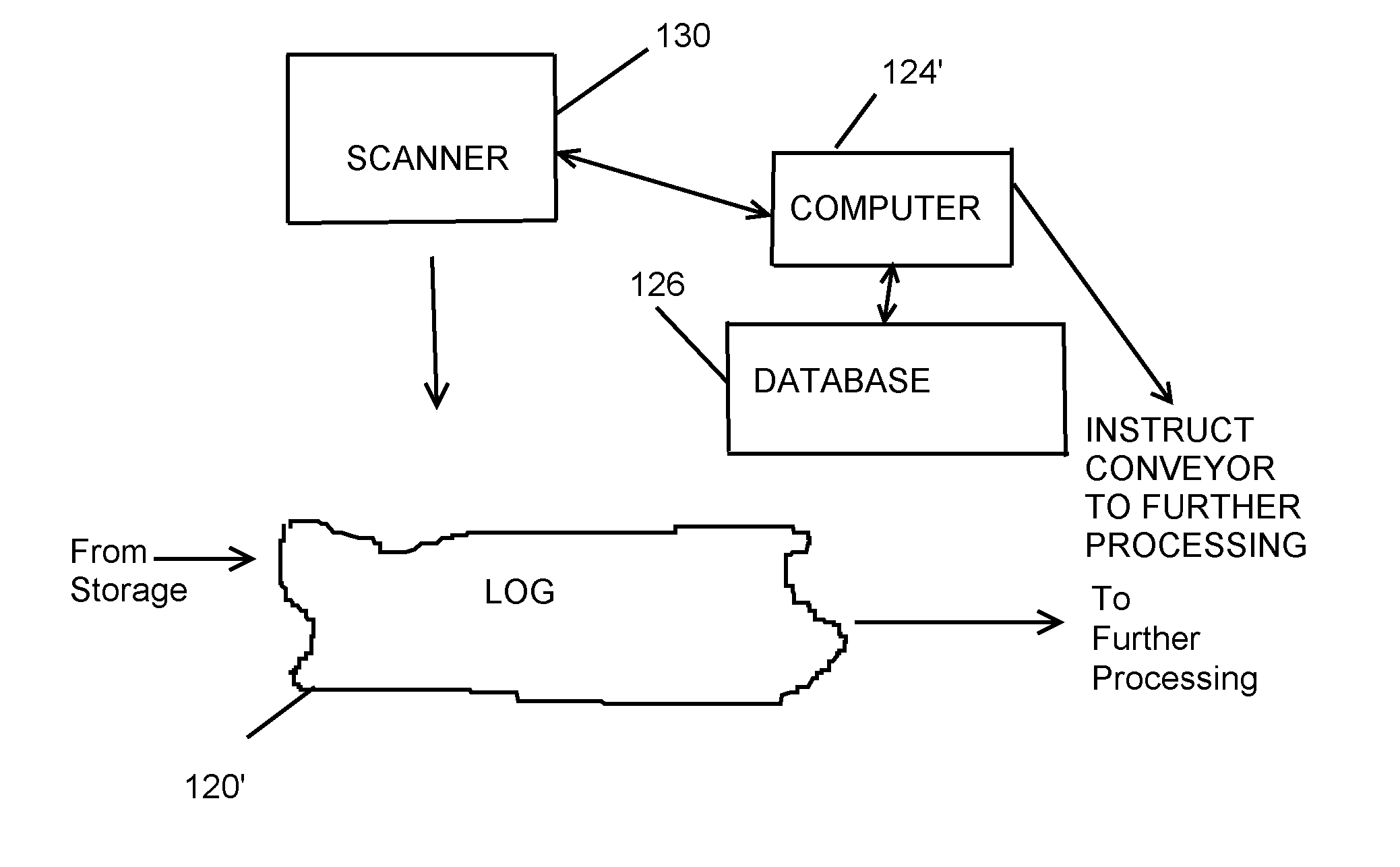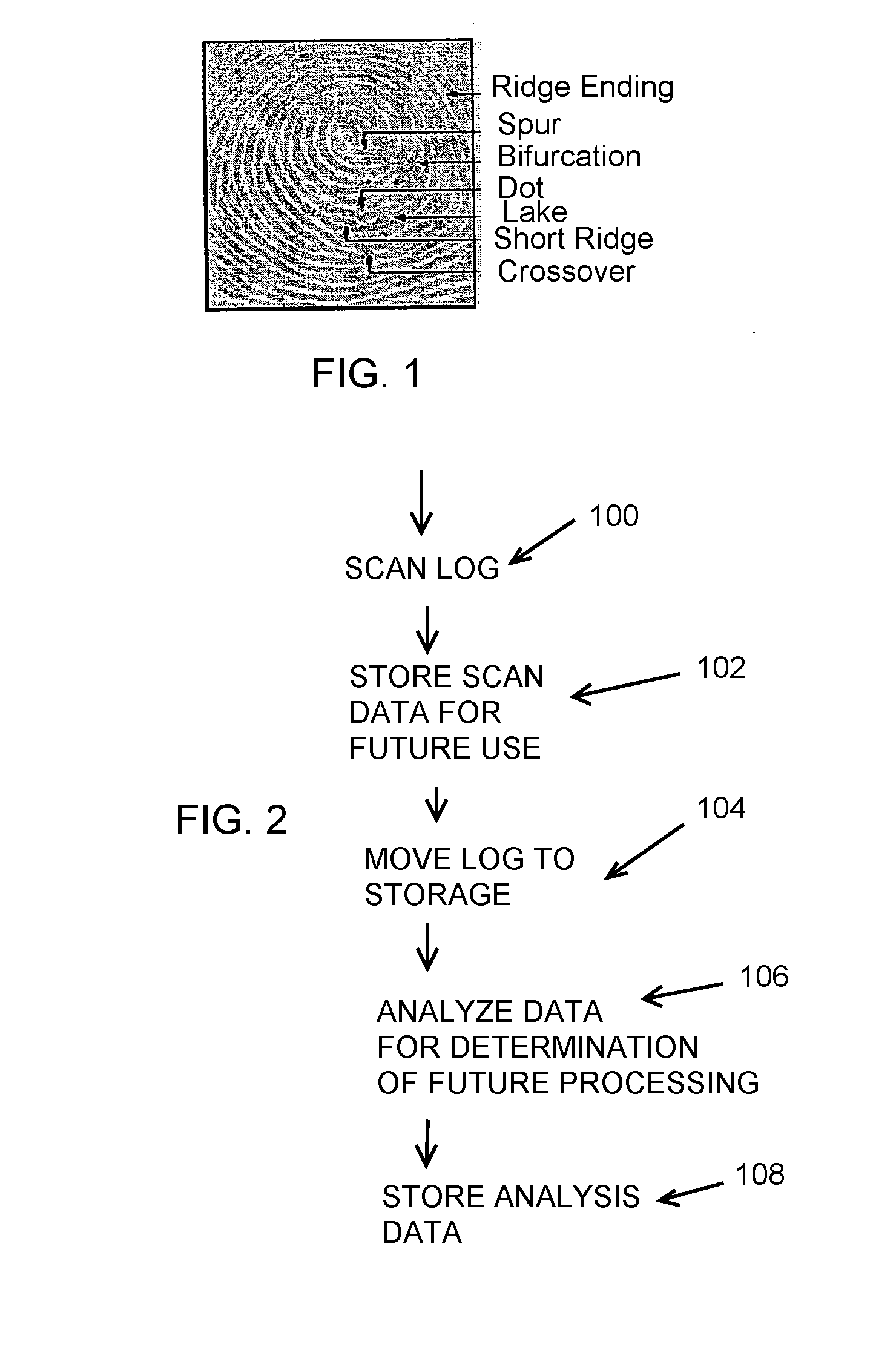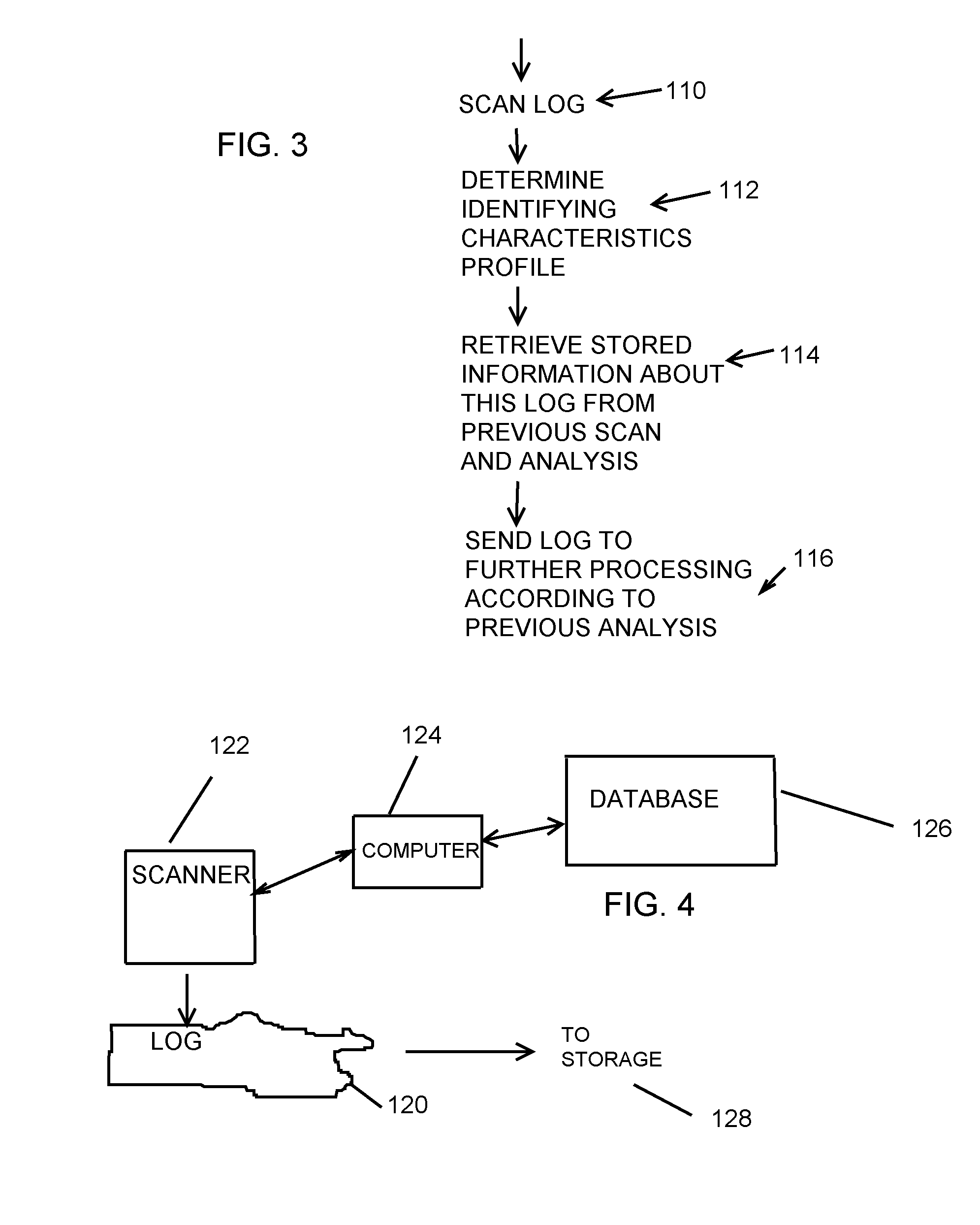Material, log and lumber identification through video recognition
a technology of video recognition and material identification, applied in the direction of precision positioning equipment, metal sawing accessories, manufacturing tools, etc., can solve the problems of difficult and expensive application, cosmetically undesirable, and inability to perform an exhaustive analysis of a piece at the point of processing, mark, or tag,
- Summary
- Abstract
- Description
- Claims
- Application Information
AI Technical Summary
Benefits of technology
Problems solved by technology
Method used
Image
Examples
Embodiment Construction
[0015] The system according to a preferred embodiment of the present invention comprises methods and apparatus to examine a log or other materials and use the material's naturally occurring features to uniquely identify the material for later recognition in another part of a process.
[0016] In a particular embodiment, end grain patterns of logs or lumber are used for identification.
[0017] A unit of raw, or in process, material is scanned using conventional electronic methods to identify unique, naturally occurring characteristics. These characteristics are classified and recorded, then become the unique identifiers or “finger print” for the material. Further conventional scanning and computation may occur to determine other aspect such as: size, weight, color, content, defects, shape, and the optimum method of processing. At some subsequent stage, the material is re-scanned to recognize the naturally occurring characteristics as before. This later scan is compared to the library of...
PUM
 Login to View More
Login to View More Abstract
Description
Claims
Application Information
 Login to View More
Login to View More - R&D
- Intellectual Property
- Life Sciences
- Materials
- Tech Scout
- Unparalleled Data Quality
- Higher Quality Content
- 60% Fewer Hallucinations
Browse by: Latest US Patents, China's latest patents, Technical Efficacy Thesaurus, Application Domain, Technology Topic, Popular Technical Reports.
© 2025 PatSnap. All rights reserved.Legal|Privacy policy|Modern Slavery Act Transparency Statement|Sitemap|About US| Contact US: help@patsnap.com



